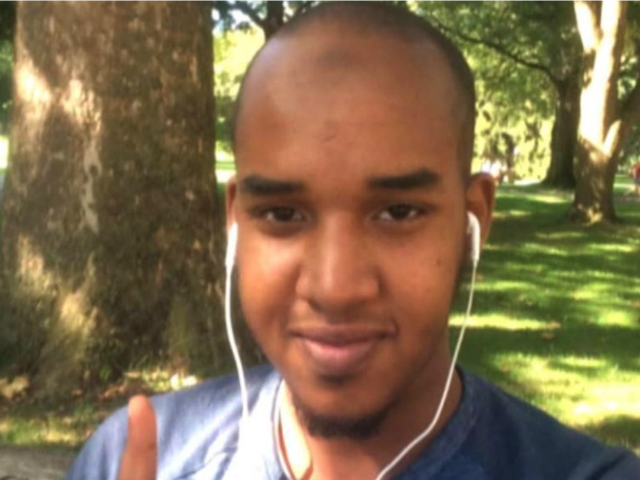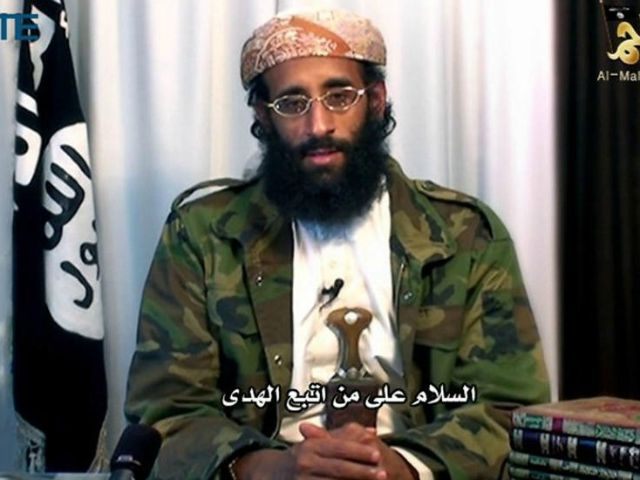The jihad attack by Ohio State University student Abdul Razak Ali Artan shows how an American-born Muslim is the spiritual father of the decentralized “lone wolf” terror strategy.
“Lone wolf” terrorist tactics have changed the face of Islamist attacks, which once were exemplified by al Qaeda’s coordinated, simultaneous, and spectacular strikes, such as the 9/11 atrocity. Instead, the attacks are now carefully orchestrated by Muslim leaders via one-on-one Internet conversations that gradually persuade young Muslims in American and Europe to launch apparently random attacks with any weapon that the attacker can get their hands on.
This change was led by Anwar al-Awlaki, who was killed by a U.S. missile five years ago in his immigrant father’s homeland of Yemen, some 8,500 miles from his own birthplace in New Mexico.
Five years after his death, jihad organizers are using the Internet to perpetually replay al-Awlaki’s combination of Islamic sermons and Western idioms, and so his digital ghost is motivating a stream of young Muslim men in the West to destroy themselves in a series of deadly attacks on the non-Muslim kaffirs.
Ohio State University terrorist Abdul Razak Ali Artan called al-Awlaki a “hero” in a Facebook post shortly before his car and knife attack that sent ten Americans to the hospital. Artan’s violent spree was stopped by a good guy with a gun. The Facebook posts also showed Artan with his index finger raised, which is is an open signal of support to his friends of his support for the fundamentalist Salafi brand of Islam that is championed by ISIS, or the Islamic State.
Artan was a Somali refugee, and Somali terror group Al-Shabaab (or “The Youth”) has been promoting “lone wolf” attacks for years in slickly produced videos, many of which featured footage of al-Awlaki, as shown in this video video about the mainstream media’s coverage of terror recruiting:
https://youtu.be/fuq94_XYJPU
The two elements of terrorist planning that law enforcement has looked to disrupt in the past were money and organizational infrastructure. Take 9/11 as an example. The investigations focused on who had supplied the hijackers with cash and who had supported their plot with travel, communications, ID and other forms of direct organizational support. It was a complex operation and fifteen years later, it is considered “old school” by Al-Qaeda.
That centralized strategy became very difficult once the U.S. counter-terror force began attacking Al-Qaeda’s organization, leadership and communications.
So al-Awlaki gradually developed an alternative, decentralized strategy, based on his ability to gradually persuade Muslims in the West to kill themselves and others for Allah. The son of a Yemeni immigrant, he was born and grew up in the United States, but did not escape the Islamic fervor of his father’s homeland. Instead, he combined radical Islam with Western styles and digital technologies to create a long-distance, slow-motion, jihad weapon.
Take the case of Nidal Hassan, the Muslim terrorist who killed 13 people and injured more than 30 others at Fort Hood, Texas in 2009. Hassan’s attack required no money and no organizational support, but he had indoctrination from email exchanges with al-Awlaki.
The deadly Boston Marathon attack was carried out by two Muslim brothers who learned how to make a pressure cooker bomb from an al-Qaeda magazine called Inspire! using easy to find materials. Inspire! magazine was founded by al-Awlaki. Dzhokhar Tsarnaev tweeted a few weeks before the attack to listen to al-Awlaki and ‘‘you will gain an unbelievable amount of knowledge.’’
The San Bernardino massacre by Muslim husband and wife also required very little in the way of time or money. Syed Rizwan Farook and his wife watched hours of al-Awlaki videos with next-door neighbor and Muslim convert Enrique Marquez.
Even though al-Awlaki was killed by a U.S. drone strike in Yemen in September, 2011, his presence was felt in the January 2015 Paris attack. The terrorists who attacked the offices of satirical magazine Charlie Hebdo said they were financed by al-Awlaki. As Reuters reported:
Cherif Kouachi, who was killed along with his older brother by police on Friday after a siege at a printing works in north France following a three-day manhunt, made the assertion to BFM-TV before his death while holed up inside the building.
“I was sent, me, Cherif Kouachi, by Al Qaeda of Yemen. I went over there and it was Anwar al Awlaki who financed me,” he told BFM-TV by telephone…
Some of the other trrorist acts al-Awlaki helped inspire, finance or organize:
- The two men who attempted to kill Pamela Geller, Breitbart reporters and others at the “Draw Mohammed” event in Garland, Texas, were inspired by al-Awlaki. Nadir Hamid Soofi gave his mother CDs of al-Awlaki speeches before the attack and Elton Simpson’s avatar was a photo of Awlaki.
- The FBI learned that Mohammod Youssuf Abdulazeez, the Muslim terrorist who murdered four Marines and a sailor in Chattanooga, Tennessee in 2015 had watched al-Awlaki videos prior to the shootings.
- In 2009, al-Awlaki gave advice to attempted “underwear bomber” Umar Farouk Abdulmutallab.
- Also in 2009, al-Awlaki emailed with Major Nidal Hasan, the Muslim who killed 13 people at the Fort Hood massacre in Texas. He called the murders “a heroic action.”
- Roshonara Choudhry, who stabbed a former Labour minister in London in 2010, was inspired after watching online videos by al-Awlaki.
- Another al-Awlaki fan in 2010 was Faisal Shahzad, the attempted Times Square bomber.
- Anwar al-Awlaki also had direct connections with some of the 9/11 terrorists, as discussed in the 60 Minutes “28 Pages” report.
This deadly resume is a huge contrast to the portrayal of al-Awlaki as a moderate Muslim in the wake of 9/11. The New York Times said in 2001 that al-Awlaki was part of a “a new generation of Muslim leader capable of merging East and West.’’
Anwar al-Awlaki’s successful double life shows how well he understood both the new style of decentralized planning before a terror attack and the public relations that must accompany and frame those murderous attacks.


COMMENTS
Please let us know if you're having issues with commenting.